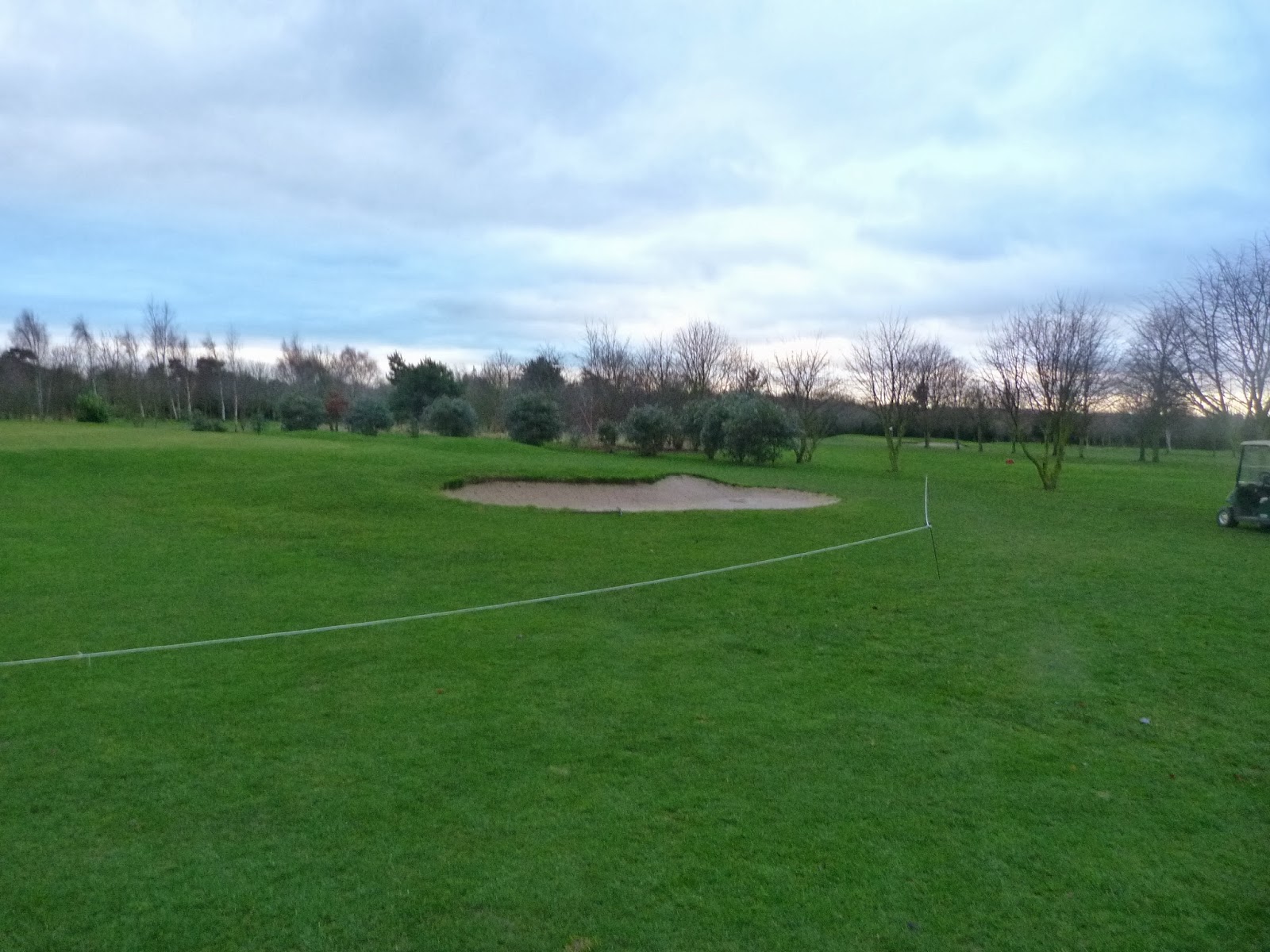Aeration of the Greens
You will have noticed in the passed 2 months we have be busy working on the greens.
After the warm Summer lots of water was put on the Greens with Fertilizer to keep them in good health.
This has a knock on effect and below is the reason we are working so hard at the moment.
Black Layer in Turfgrass Management

The term black layer is commonly used among sportsturf managers. This problem is an anaerobic condition that can develop in rootzones due to a number of environmental and cultural factors. This condition is more common on sand based rootzones, although it can also occur on other rootzone types.
Black layer appears as a black, foul-smelling continuous or discontinuous subsurface layer in turfgrass rootzones. Chemically, black layer is a deposit of metal sulphides, which form when hydrogen sulphide gas reacts with metal elements in the soil. For hydrogen sulphide to be released, the rootzone conditions must favour the growth of sulphur reducing bacteria, which requires water and soil organic matter.
The organic matter provides the food for the microbes, and water keeps the microbes hydrated. Soils must be relatively anaerobic (low in air) since these sulphur reducing bacteria do not survive very well in well aerated soils. The anaerobic conditions can be caused by numerous factors such as compaction, excessive irrigation, organic matter accumulation, thatch build up, sulphur application or movement of colloidal particles. Coupled with this, sulphur must be available within the soil. The growth of algae is favored by wet soils. Algae can produce substances that interfere with the movement of water in sandy mixtures, consequently reducing water movement, causing an anaerobic soil.
Effects of Black Layer
Once black layer development occurs drainage dramatically decreases in the soil. As the layer increases, the pores in the soil become filled with the hydrogen sulphide gas. Research has found that hydrogen sulphide gas is lethal to turfgrass by stopping root respiration and killing the turfgrass plant.
Symptoms
Soils with low levels of oxygen are usually darker in colour than well oxygenated rootzones. If black layer is present, particularly on a sandy soil, a dark coloured ring will form in the rootzone below the soil surface, which can range from less than an inch to several inches in thickness. Areas of turf may turn a bronze colour and thinning of the grass is likely.
Control
The most important measure with black layer is prevention by ensuring that the soil is well aerated and drains freely. This can be achieved through numerous techniques including
- Using a cultivation programme which will improve water movement through the soil and subsequently increase air exchange. Examples include deep coring and slicing.
- Ensuring that good subsurface and surface drainage is in place
- Irrigation use that prevents over watering and standing water
- Reduction in sulphur containing fertilisers, since sulphur has been shown to reduce oxygen levels in the soil.
Research at Michigan State University, found that when elemental sulphur was applied, large quantities of sulphides formed. It is critical to remember that if sulphur molecules are not present in the soil, then the sulphur reducing bacteria which are causing the problem cannot survive, which should eliminate the production of hydrogen sulphide gas.
The use of nitrate based fertilisers has shown some use in reducing the likelihood of hydrogen sulphide formation. The results of nitrate applications however are temporary due to nitrification and thus light frequent fertilisation is suggested.









































